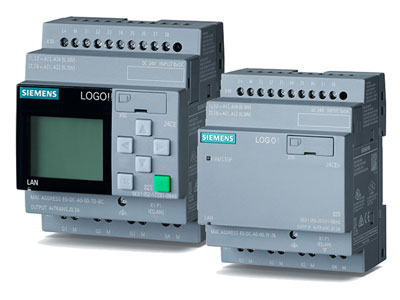Key Takeaway
The cost of a PLC can vary widely based on its features and capabilities. Basic PLCs, suitable for small projects or learning purposes, can cost less than $100 and often come with free programming software. For more advanced industrial applications, you can expect to pay around $1,000 for a mid-range PLC, which includes the hardware and necessary software. High-end PLCs with extensive features and higher processing power can cost several thousand dollars. Additional costs may include programming software, expansion modules, and maintenance. It’s essential to consider your specific needs and budget when selecting a PLC to ensure you get the best value.
Factors Affecting PLC Cost
Several factors influence the cost of PLCs. Technical specifications like processing power, memory, and the number of I/O points significantly impact price. Brand reputation also matters, with top brands like Siemens and Allen-Bradley typically costing more due to their reliability and support. Additional features, such as advanced communication capabilities and programming options, can increase costs. Scalability adds to the expense, as systems designed for easy expansion are usually pricier upfront. Lastly, environmental robustness—PLCs built to withstand harsh conditions with higher IP ratings—also drives up costs. Understanding these factors helps ensure you invest wisely, balancing cost with performance and durability.

Cost Comparison of Popular PLC Brands
Comparing the costs of PLCs from different brands provides valuable insights into the market.
Siemens: Known for its high-end, robust PLCs, Siemens offers a range of products from basic to highly sophisticated models. Prices can start from $500 for basic models and go up to several thousand dollars for advanced systems.
Allen-Bradley: Allen-Bradley, a brand under Rockwell Automation, is synonymous with reliability. Their MicroLogix series starts at around $300, while their more advanced ControlLogix systems can exceed $10,000.
Mitsubishi: Mitsubishi’s PLCs are recognized for their cost-effectiveness and performance. Basic models like the FX series start at approximately $400, with high-end models priced around $5000.
Schneider Electric: Known for innovative and flexible solutions, Schneider’s PLCs range from $400 for basic models to over $7000 for advanced ones.
Omron: Omron provides versatile PLCs suitable for various applications, with prices starting from $300 and high-end models reaching up to $6000.
This comparison highlights the wide range of options available, enabling industries to choose PLCs that best fit their operational needs and budget constraints.
You May Like to Read
Budgeting for PLC Systems
Effective budgeting for PLC systems requires a thorough understanding of both initial costs and long-term expenses. The initial investment includes the cost of PLC hardware, software licensing, and any additional modules needed for specific functionalities. This upfront expenditure is critical to establish the basic framework of the PLC system.
Installation and integration costs are another significant factor. These expenses can vary depending on the system’s complexity and the need for custom programming. Proper installation ensures that the PLC operates efficiently and integrates seamlessly with existing systems.
Training and support are essential components of the budget. Investing in training programs for personnel to operate and maintain the PLCs is crucial for smooth operation. Additionally, budgeting for ongoing support and maintenance contracts helps address any technical issues that may arise, ensuring the system’s reliability.
Upgrades and scalability should also be considered. Planning for future upgrades ensures that the PLC system remains relevant and capable of meeting evolving industrial demands. This forward-thinking approach helps avoid obsolescence and maximizes the return on investment.
By carefully considering these aspects, industries can develop a comprehensive budget that covers all potential expenses, ensuring smooth implementation and sustained operation of PLC systems. This approach not only helps in managing costs but also in maintaining efficiency and reliability in automation processes.
Cost-Benefit Analysis
Conducting a cost-benefit analysis helps justify the investment in PLC systems by highlighting their long-term advantages.
Increased Efficiency: PLCs enhance operational efficiency by automating processes, reducing human error, and improving production consistency.
Reduced Downtime: With their ability to quickly diagnose and rectify issues, PLCs minimize downtime, leading to significant cost savings.
Enhanced Flexibility: PLCs offer high flexibility, allowing easy modifications and expansions, which is beneficial for industries with changing production needs.
Improved Safety: Automated systems enhance workplace safety by reducing the need for manual intervention in hazardous environments.
While the initial investment in PLCs can be substantial, the long-term benefits in terms of increased productivity, reduced maintenance costs, and enhanced operational flexibility make them a worthwhile investment for any industrial setup.
Future Cost Trends
The cost of PLC systems is influenced by ongoing technological advancements and market dynamics.
Technological Advancements: As technology evolves, we can expect PLCs to become more powerful, with increased processing capabilities and enhanced features, potentially leading to higher prices for cutting-edge models.
Market Competition: Increased competition among manufacturers can drive prices down, making advanced PLC systems more accessible.
IoT Integration: The integration of IoT (Internet of Things) in industrial automation is likely to influence PLC pricing, as more systems incorporate smart capabilities and connectivity features.
Sustainability Initiatives: As industries move towards more sustainable practices, the demand for energy-efficient PLCs is expected to rise, potentially affecting costs.
Staying updated with these trends helps industries make informed decisions about investing in PLC systems that align with future technological and market developments.
Conclusion
Evaluating the cost of PLC systems involves considering various factors, comparing popular brands, and conducting thorough budgeting and cost-benefit analysis. Understanding these aspects enables industries to make informed decisions, ensuring they invest in PLC systems that offer the best value for their specific needs. By staying informed about future cost trends and technological advancements, industries can maintain a competitive edge, leveraging PLC systems to enhance efficiency, productivity, and operational excellence.
By focusing on these critical elements, newly joined engineers can gain a comprehensive understanding of PLC costs, aiding in effective decision-making and strategic planning for industrial automation projects.
